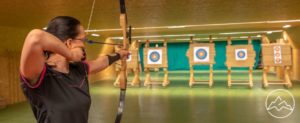According to recent statistics, the popularity of archery has been steadily increasing, attracting individuals of various skill levels and interests. For those who are considering purchasing a new bow, one important decision to make is whether to choose a split limb or solid limb bow. This article aims to provide a comprehensive guide to assist individuals in making an informed choice. It will examine the pros and cons of each bow type, discuss their design and performance characteristics, and highlight key considerations to keep in mind. By understanding the differences between split and solid limb bows, individuals can select the option that best suits their shooting preferences and requirements. Whether it is the compactness and accuracy of a solid limb bow or the durability and speed of a split limb bow, this guide will shed light on the various factors to consider when choosing between the two.
Key Takeaways
- The popularity of archery is increasing, making the choice between split and solid limb bows important when purchasing a new bow.
- Split limb bows are known for their durability, speed, and customization options, but they can be expensive and heavy.
- Solid limb bows are compact, lightweight, and accurate, but they can experience delamination and torque stress.
- Personal preferences and shooting style should be considered when choosing between split and solid limb bows, as some archers prioritize compactness and lightweight nature, while others prefer increased durability and resistance to torque.
Pros and Cons
When considering the choice between split limb and solid limb bows, it is important to evaluate the pros and cons associated with each design. Solid limb bows have certain advantages such as being compact and lightweight, making them suitable for smaller archers and hunting from blinds or tree stands. They are known for their accuracy and consistent shots. However, solid limb bows can experience delamination around the V-groove and torque stress, which can affect alignment and accuracy. On the other hand, split limb bows offer increased durability due to the lamination process and lack of a groove or notch. They are faster and more accurate due to the design flexibility and resistance to torque. They also have reduced hand shock and more customization options. However, split limb bows are generally more expensive and heavier compared to solid limb bows. They also have a wider profile, which can affect shooting experience and preference. Ultimately, the choice between split and solid limb bows depends on individual needs and preferences.
Design and Performance
The design and performance of compound bows can vary depending on the type of limb construction employed, with solid limb bows resembling a seamless unit and split limb bows resembling two parallel limbs. The choice of limb materials can greatly influence the shooting experience.
- Limb Materials: The choice of materials used for the limbs can impact the overall performance of the bow. Modern compound bows often utilize lightweight and durable materials such as carbon fiber or fiberglass, which provide strength and flexibility to the limbs.
- Shooting Experience: The limb design plays a crucial role in the shooting experience. Solid limb bows, with their compact and lightweight design, are favored by smaller archers and those hunting from blinds or tree stands. On the other hand, split limb bows offer increased durability, faster and more accurate shots, reduced hand shock, and more customization options, making them popular among experienced archers.
It is important to consider both the limb materials and the shooting experience when choosing between split and solid limb bows, as they can greatly impact an archer’s performance and overall satisfaction.
Considerations
One important factor to consider in selecting a compound bow is the individual archer’s specific needs and preferences. Several factors should be taken into account when choosing between split and solid limb bows. Personal preferences play a crucial role in this decision-making process. Some archers may prioritize the compactness and lightweight nature of solid limb bows, making them suitable for smaller archers and hunting from blinds or tree stands. On the other hand, others may prefer the increased durability and resistance to torque offered by split limb bows. Additionally, considerations such as accuracy, customization options, hand shock, and cost should also be taken into account. Ultimately, the choice between split and solid limb bows comes down to the archer’s personal preferences and shooting style.
Frequently Asked Questions
Are split limb bows more prone to breaking or damage compared to solid limb bows?
Split limb bows are not inherently more prone to breaking or damage compared to solid limb bows. While the split limb design may raise concerns about durability, modern manufacturing techniques and materials have significantly improved the strength and resilience of split limb bows. Additionally, split limb bows offer advantages such as increased speed and power due to their design flexibility. However, they may require more frequent maintenance and may not be as suitable for beginner archers or hunting from blinds or tree stands.
Can a beginner archer handle a split limb bow, or is it recommended to start with a solid limb bow?
Benefits of starting with a solid limb bow for a beginner archer include its compact and lightweight design, which is suitable for smaller archers and hunting from blinds or tree stands. Solid limb bows are known for their accuracy and consistent shots. However, experienced archers may prefer the advantages of using a split limb bow, such as increased durability due to the lamination process and resistance to torque. Split limb bows also offer faster and more accurate shots, reduced hand shock, and more customization options.
How does the choice between split and solid limb bows impact the overall speed and power of the bow?
Split limb bows are generally faster and more powerful compared to solid limb bows. The design of split limb bows allows for increased flexibility and resistance to torque, resulting in higher arrow speeds. Additionally, the lamination process used in split limb bows increases their durability. However, it is important to note that the overall speed and power of a bow are influenced by various factors such as draw weight, draw length, and arrow weight. As for accuracy and stability, the design of split limb bows reduces hand shock and provides more customization options, improving overall shooting experience.
Are there any specific hunting scenarios or environments where one type of limb design is more advantageous over the other?
In different hunting scenarios and environments, the choice between split limb and solid limb bows can have specific advantages. Split limb bows are advantageous in certain environments due to their increased durability, resistance to torque, and reduced hand shock. This makes them suitable for hunting in rugged terrains or dense vegetation where durability and accuracy are crucial. Additionally, the lack of a groove or notch in split limb bows allows for a more flexible design, resulting in increased speed and accuracy.
Are there any maintenance or care differences between split limb and solid limb bows that archers should be aware of?
Maintenance differences between split limb and solid limb bows include the need for regular inspection and tightening of limb bolts in split limb bows to prevent limb separation. Care tips for both types of bows include checking for any signs of wear or damage, lubricating the cams and axles, and ensuring proper string and cable maintenance. Additionally, solid limb bows may require more attention to prevent delamination around the V-groove, while split limb bows may require more frequent waxing of the limbs.
Conclusion
In conclusion, when choosing between split limb and solid limb bows, it is important to consider individual needs and preferences. Solid limb bows are known for their accuracy and consistency but can experience delamination and torque stress, affecting alignment and accuracy. Split limb bows offer increased durability and resistance to torque, making them faster and more accurate. However, they are generally more expensive and heavier compared to solid limb bows. One interesting statistic to evoke an emotional response is that split limb bows have been found to reduce hand shock, leading to a smoother and more comfortable shooting experience.










